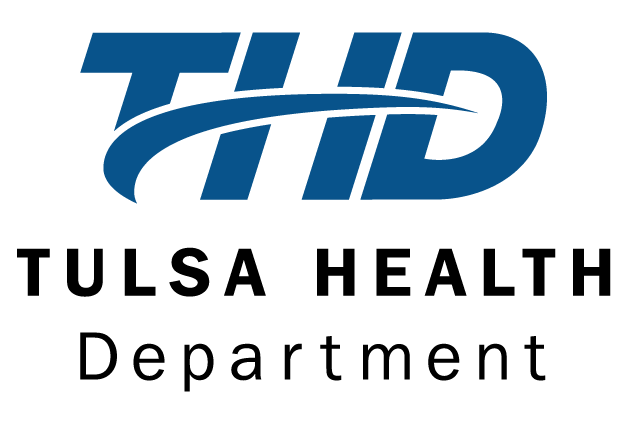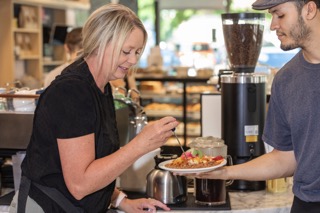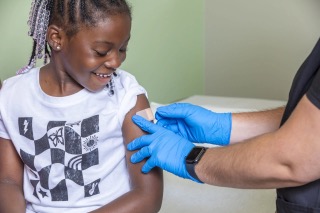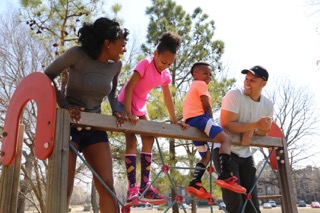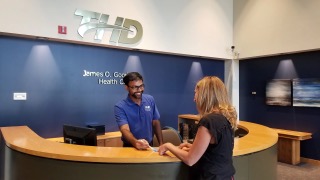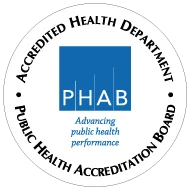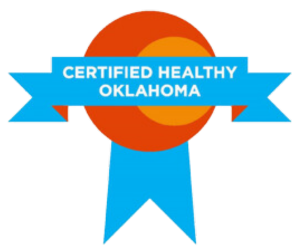Based on the recommendation of the Oklahoma Department of Environmental Quality, the City of Tulsa issued a voluntary boil order at noon on Feb 19, 2021 until further notice for Tulsa water customers who have experienced low water pressure, are seeing discolored water, and those who have recently had water service restored after their water was shutoff for waterline repairs. More details and frequently asked questions are available here.
Food service establishments are allowed to operate during the voluntary boil order advisory as long as the conditions outlined below are strictly followed. For more information and questions, call THD’s Food Protection Services at 918-595-4300.
1. What is the purpose of boiling the water?
The community water supply is, or could be, contaminated with germs that can make you sick. Boiling destroys germs that might be in the water.
2. What immediate steps must a food establishment take when a voluntary boil order advisory is issued?
DO NOT use the water for drinking, making juices and ice, washing fruits and vegetables and for preparing ready-to-eat foods.
Turn off drinking water fountains.
Disconnect vegetable spraying sprinkler systems. Use treated or bottled water in spray bottles to keep your vegetables moist.
Throw away ice and beverages that may have already been prepared with the affected water supply.
Discontinue making ice; use ice from a commercial ice supplier made with safe water.
Disconnect ice cream machines, dipper-wells and any other food preparation equipment connected to the water supply.
Post signs at all faucets, including the kitchen area and washrooms as a reminder of the boil water advisory and not to drink the water.
To make the water safe, bring to a rapid rolling boil for at least one minute. Boil only as much water in the pot that one can comfortably lift without spilling. Ensure water is cooled appropriately before using or before direct handling to prevent scalds.
Provide only water safe for drinking to customers.
3. What sources of water are approved to be used in a restaurant during a voluntary boil order advisory?
Water that has been boiled for one full minute (Water can be boiled the night before, cooled overnight and stored in a covered disinfected container. Always ensure water is cooled appropriately before use or direct handling to prevent scalds).
Commercially bottled water
Hauled water from an alternate approved supply not affected by the boil water advisory
4. Can I still use the cold beverage dispensing machine?
No. Beverage machines connected to the cold water supply used to dispense cold drinks (slush, carbonated beverages, iced cappuccino, etc.) should not be used during the precautionary boil water advisory.
5. Can I use tap water to prepare food products that use water as an ingredient without cooking?
No. Use boiled, bottled or an alternate safe water source in the preparation of food products such as powdered drinks, puddings, jellies, sauces, etc.
6. Can I use tap water to prepare food that will be boiled?
Yes. Tap water can be used to prepare food that will be boiled as long as the water is brought to a tolling boil for one minute. Ensure water is cooled appropriately before use or before direct handling to prevent scalds.
7. Can I use a commercial coffee brewers and hot tea towers during a voluntary boil order advisory?
Yes. Ensure your coffee maker and hot tea towers produce water at 70 degrees Celsius or 160 degrees Fahrenheit. This temperature is sufficient to inactivate disease-causing microorganisms. It is recommended that the coffee pot be held for at least five minutes on the burger before consumption. The temperature should be verified using a probe thermometer.
8. Is the water safe for handwashing?
Yes. Wash hands using tap water and soap, making sure to lather and scrub all surfaces of the hand for a minimum of 20 seconds. Rinse hands well with running water, and dry with a paper towel. After washing hands with tap water, use an alcohol-based hand sanitizer containing more than 60% alcohol. Ensure that a hand sanitizer is provided at each handwashing station including public restrooms. Good handwashing practice should be emphasized to all staff.
9. Can the commercial dishwasher be used to clean and disinfect dishes?
Yes. Follow you normal dishwashing procedure, and ensure that the dishes have enough time for complete air drying to take place.
10. Can I use a glass washer with a cold water rinse?
No. Glass washers with a cold water rinse must not be used during the Voluntary Boil Order Advisory. It is recommended to use a hot water sanitizing cycle to wash and sanitize the glasses. For further information, discuss with your public health inspector. Single-use glasses/cups can also be used.
11. Can I still wash my dishes by hand?
Yes. Follow your normal 3-compartment sink dishwashing procedure, and ensure that the dishes have enough time for complete air drying to take place.
12. How do I disinfect food contact surfaces?
Food contact surface such as counter tops, cutting boards and food equipment that cannot fit into a dishwasher to sink should be thoroughly washed to remove all food residues and the disinfected using a chlorine solution. To prepare the 200mh/L chlorine solution, add one teaspoon of unscented liquid household bleach (5.25% sodium hypochlorite) per one gallon of room temperature water that has been previously boiled, bottled or hauled. After washing and rinsing, let equipment sit in solution for at least 10 seconds. If spraying or pouring onto food contact surfaces, let sit for a minimum of two minutes. Make the solution daily as it loses its strength with time, therefore it should not be reused or stored. Vinegar is not an acceptable disinfectant.
13. Should I notify customers?
Yes. If customers ask about procedures, you can direct them to this web page which indicates how you are modifying food handling practices to protect them from potential contaminants. All washrooms must be posted with appropriate boil water signage – see end of this document.
14. What do I do after the Voluntary Boil Order Advisory is lifted?
Flush all water-using fixtures by running the tap for five minutes. If your service connection is long or complex, consider flushing for a longer period of time.
Ensure equipment with water line connections such as post-mix beverage machines, auto-fill coffee/tea makers, instant hot water heaters, ice machines, vegetable spray lines/misters, etc. are flushed, cleaned and disinfected according to the manufacturer’s recommendations.
Flush, drain, clean and disinfect cisterns that contained the affected water source.
Run water softeners through a regeneration cycle according to the manufacturer’s recommendations.
Drain and refill hot water heaters that have been set below 110 degrees Fahrenheit.
All restrooms must be posted with appropriate boil water signage – see signs below that can be printed and used.
Voluntary Boil Order Sign 1 English | Spanish
Voluntary Boil Order Sign 2 English | Spanish
Content from Alberta Health Services
